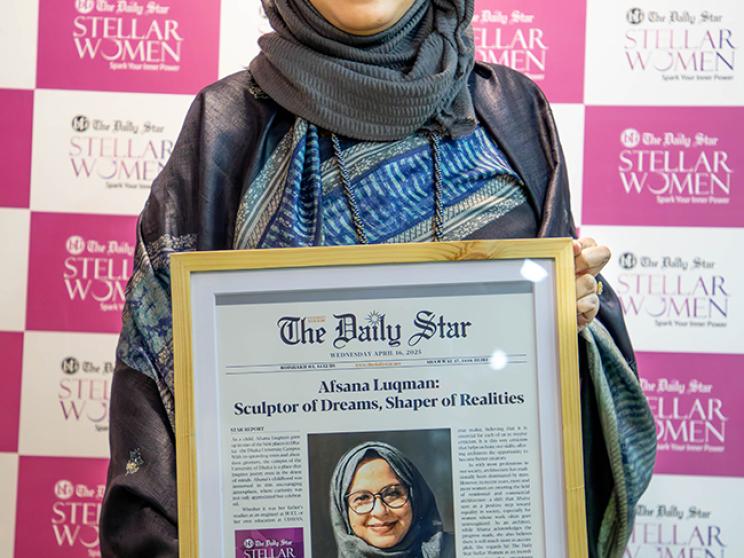Afsana Luqman: Sculptor of Dreams, Shaper of Realities

Afsana Luqman spent her childhood in the Dhaka Cantonment area, as her father served in the Bangladesh Army. One of her favorite places growing up was the Dhaka University campus, which she got to explore during her schooling at UDAYAN, and also from time spent at her "Mamabari" in the area. With its sprawling trees and widespread greenery, the campus of the University of Dhaka is a place that inspires poetry even in the driest of minds. It is perhaps because of her highly cultured parents that Afsana's childhood was immersed in an encouraging atmosphere, where curiosity was not only appreciated, but rather celebrated.
It is not known whether Afsana's inspiration to pursue architecture stemmed from her father's background as an engineer at BUET or from her own education at UDAYAN. Perhaps it was a perfect combination of the two, where her father was the inspiration behind her lofty aspirations of becoming an architect in Bangladesh. Adding to it, she had always been fascinated with the labyrinthine campus of BUET, which may also be the reason why she chose to study there. Speaking to her, you get glimpses of her candor, and her passion for her profession. Afsana says that architecture is not just meant to create structures for living/working in, or even merely for recreation; rather, it is visual art, something that will also act as a point of interest, encouraging conversation and inspiring creation.
Aside from her father, Afsana claims to have been inspired by a number of her teachers at BUET, including Wares Sir, Saiful Sir, and Riyaad Sir. She proudly says that professionals like Marina Tabassum continue to inspire her in bettering her craft, year after year. Her approach to how a building connects us with nature and light serves as an ideal that can help shape the thinking of future generations. Unlike many other professionals excelling in their art, Afsana is a true realist as she feels in her heart that it is necessary for each of us to receive constructive criticism and fair evaluation, as both of these help us hone our craft, giving architects the opportunity to become better creators.
She also feels that one should give credit where it is due, especially when it is a task assigned to a team, which is often the case in architecture nowadays. Afsana takes pride in her husband, Architect Khalid Ahmed Khan, a staunch supporter of her work and in life. She says that it is extremely essential to have the constant support of a loved one, and she vouches that it is due to her husband's steady hand beside her that she was able to overcome many of the challenges she faced as a working mother with two young children.
As with most professions in our society, men have largely dominated architecture as well. However, in recent years, more women are seen entering the world of residential and commercial architecture, something that Afsana views as a very positive step towards equalizing the society, especially for women whose work often goes unrecognized. As an architect, while Afsana believes that we have come a long way, she also acknowledges that we have even a longer way to go.
According to her, the bti–The Daily Star Stellar Women initiative is a remarkable effort that encourages women from diverse fields to step forward, showcase their achievements, and confidently seek recognition for their contributions to both their professions and society. She hopes that this initiative will continue to provide rising female professionals the positive boost of confidence that can go a long way in shaping their future.



 For all latest news, follow The Daily Star's Google News channel.
For all latest news, follow The Daily Star's Google News channel.
Comments